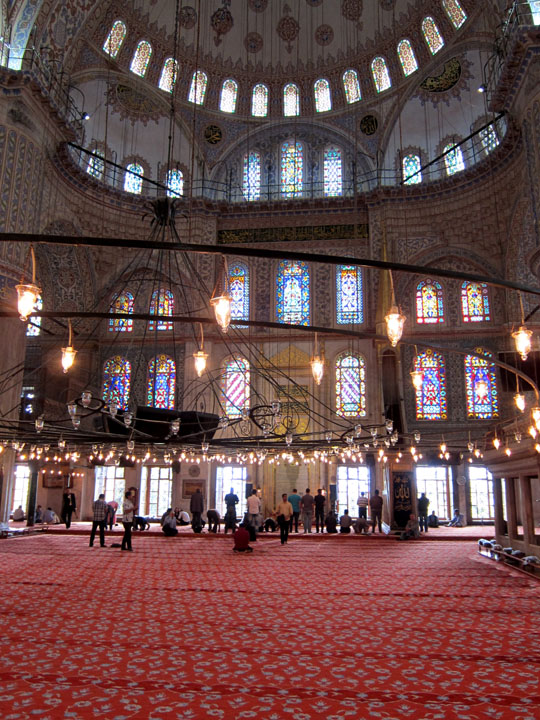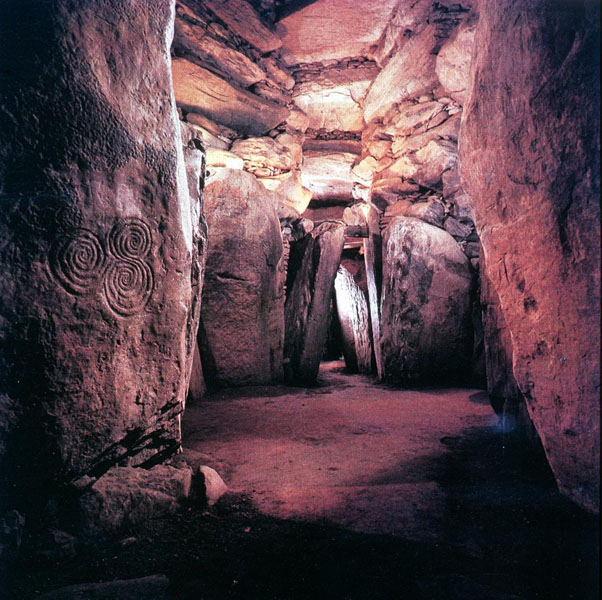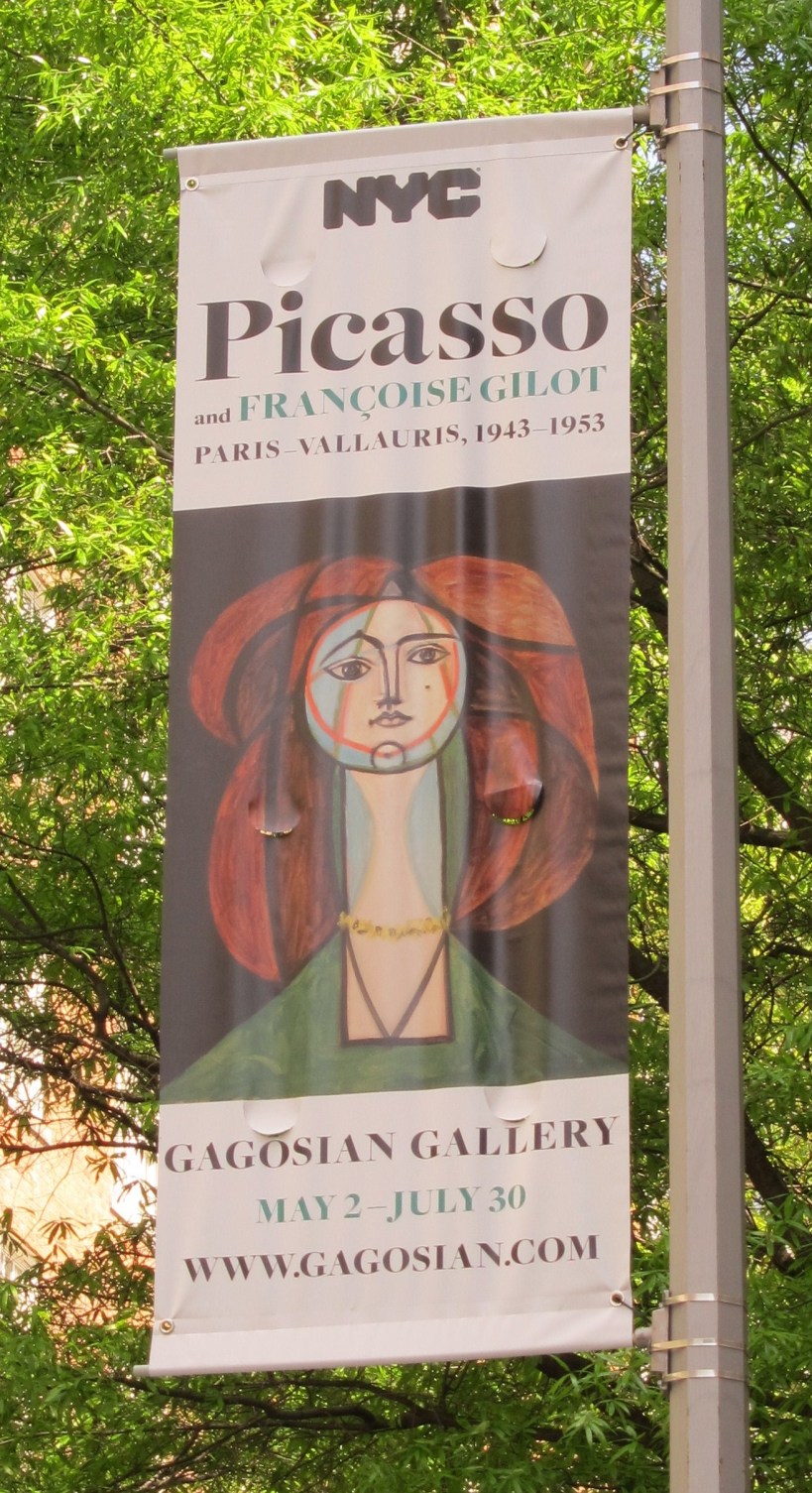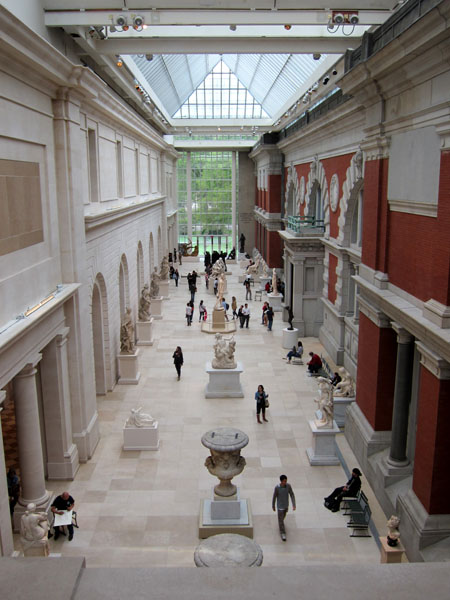Why You Can’t Take Photos in Museums

I take a lot of pictures when I travel – architecture, market stalls, natural vistas, local life. As much as I like to soak in the experience, I always like having an image to take home as a souvenir. But like many travelers, I eventually encounter a museum or historical site that doesn’t allow photography. So why can’t I take pictures in a museum? It may be frustrating and not really obviously why photography is prohibited, but I think it comes down to a few simple rationales. Hopefully this explanation will give you some perspective next time you see the dreaded “No Photography” sign.
#1 – Crowd Control

Somewhere in there is the Mona Lisa (Photo: Lydie/EPA, The Guardian)
I am convinced crowd control is the single greatest cause for no photography rules! People trying to take photos don’t pay attention to their surroundings, they jostle for position, and cause traffic jams. Imagine if the “No Photos” rule was actually enforced at the Louvre? Limiting photography is perhaps the only tool museums have to control the throng of daily visitors.
In setting up a gallery, museum curators must balance how to best display the art, how the exhibit should flow, how pieces could play off each other and then more practically, how are people going to walk through this space? After some assumptions about the number of daily visitors and the average time a person views a piece (or masterpiece), they make some space concessions for the sake of the traffic flow. Nothing messes up this orchestrated herd more than constant photos pauses in which everyone waits for one person to take a photo.
Belgium – Viewing Art from inside a “Box”
I’ve written about the tiny viewing room in which the Ghent Altarpiece is displayed. In this tight space, photography is forbidden so that visitors can enter, view the piece and leave. They’ve even forbidden tour guides from speaking in the room so that people don’t stand and linger in the cramped space. So there I was, shoulder to shoulder and three rows deep, when the woman in front of me pulled out a camera and clicked away. She stayed in front of the piece for a few more minutes, taking valuable viewing real estate, even deleting photos old snaps so that she could take a few pictures more of the painting. In a gallery with an unspoken rule of “take a look and then let someone else see”, she was demonstrating why photography was actually prohibited.
#2 – “The Viewing Experience”

Contemplating a Jackson Pollock’s “One: Number 31” at the MoMA in New York City (Photo: Pete Aylward, Flickr)
Taking photos also gets in the way of appreciating the art on view. Inevitably in every museum I visit, I see someone quickly snapping from picture to picture, getting in people’s way without really even looking at the art. The behavior does a disservice to the “photographer” as well as to the other visitors.

No more photos of this impressive hall at the Egyptian Museum of Antiquities (Photo: Wikicommons)
There is a trend now to save visitors from themselves and institute strict no photography policies to ensure that all can enjoy and focus on the art. Noticeably, the Musee d’Orsay has a no photography policy. As someone who plans on spending a lot of time someday at the Egyptian Museum of Antiquities, I’m happy to see that they’ve forbidden photography. As much as I would like to photograph details of the objects on view, I think I would rather enjoy free-flowing crowds and time to enjoy the artifacts without a camera constantly popping into my line of sight.

Visitors can enjoy the Blue Mosque in Istanbul and take pictures too but don’t interfere with worshipers.
I also have a lot of sympathy for no photography rules in places of worship. No one wants flashes going off while they are praying. Even those places that do allow photography deserve unobtrusive, quiet respect from their visitors.
Ireland – No Photography in a Cave
Limiting photography is also the considerate thing to do sometimes. At Newgrange, Ireland, groups of about 10 people are led down a narrow stone path to the prehistoric burial chamber at the heart of the archaeological site. As my tour guide was getting started, one member of my group staring getting a little claustrophobic and had to move into the passageway to listen. As we were all taking a final look at the end of our visit, I asked if I could take a photo of the stone carvings. The guide said no. I asked why. “It will damage the rock,” she shot back.

Interior image of the Newgrange chamber looking toward the passageway. (Photo: UCSB)
Well obviously a flash will not harm rock – this is another case of crowd control! Imagine flashes going off is a small, dark, enclosed space? Even the calmest person could get a little disoriented and claustrophobic. The flashes would also ruin the experience of being inside the cave, watching the evocative shadows play across the rough stones.
#3 – Preservation of the Art
So maybe rock isn’t actually damaged by light but there are fragile objects that can be effected by flash photography. Non-colorfast pigments, natural varnishes and old paper are susceptible to thousands of daily camera flashes which could hasten degradation. Since these works are being preserved for the very long-term, museum go to great lengths to design special gallery lighting, use UV-filtering glasses and limit what viewers can do.
That being said, Museum are beginning to relax the rules and posting more “No Flash” signs. With a half-way decent camera, you can use a steady hand and a longer exposure time to capture exquisite images of very fragile works of art like the Bayeux Tapestry.
#4 – Copyright

Although you couldn’t take photos of Picasso’s “Femme au collier jaune” (my favorite piece) because it was privately owned, the image pretty much was everywhere in New York City advertising the Gagosian Gallery show.
Most works of art in museums are within the public sector or are old enough that image copyright does not apply. However, some museums or private owners may wish to control the distribution of their image and so they have the right to forbid photography. This is especially common for special exhibits which may have unique policies since they feature privately owned pieces and loaner works from other institutions.
Interestingly, I happened across a room of ancient Roman mosaics in Sparta. The museum attendants were adamant that no photos could be taken in the room displaying them. I asked why and it turns out these mosaics had never been documented or published in public. In an academic sense, they were “undiscovered” works of art. The museum was putting together an article about the pieces and didn’t want them reaching the public beforehand.
So, hopefully that helps next time you see a “No Photography” sign. I’m still conflicted in that I see why photography is usually banned but still really do like to take pictures when I travel. If it’s any consolation, you can always buy some postcards of your favorite pieces. I certainly have quite a collection….
So have you ever been to a museum with a “No Photo rule” and wished you could have taken pictures?











Reblogged this on Art History Ramblings.
LikeLike
Having studied art conservation, I am one of those people who gets FURIOUS when people take pictures in a museum… with a flash. If they can take a picture with no flash and do it in a way where they don’t elbow aside others… then go for it! Problem is that these days people are just taking pics to snap away … thinking they will spend time pondering the image later. Sadly… it puts something between the viewer and the experience that shouldn’t be there. Especially not the entire time!
LikeLike
Great comment! I totally agree. If you can’t enjoy a painting in front of it, are you really going to enjoy your photos of it later?
LikeLike
Really great post – thank you! I sometimes find I enjoy a visit to a museum/gallery where I can’t take pictures more. It’s easy to get caught up in trying to photograph everything, and not actually look at the works properly! No photography makes for a more restful visit. However, as a blogger, no photography can at times be frustrating, when you want to write about your experience, and share what you have seen.
LikeLike
I’m glad you find the no photography museums restful. As an art & travel blogger, I definitely understand the pull to get pictures so that you can tell a story properly. I am drawn to unique pieces and details which usually are not available online and so I need my own photographs of them. I just never want photography to get in the way of experiencing the place or art I’m visiting.
LikeLike
Great post. Some people just get so caught up capturing the moment, they completely miss out on experiencing it. Just cos you didn’t get shot of it, doesn’t mean it didn’t happen!
LikeLike
Absolutely, and that goes for a lot of things we encounter traveling – sunsets, street events, etc. You’ll always have stories, even if you don’t have the pictures. 🙂
LikeLike
Yes I can understand the large museums that have huge numbers of tourists banning cameras. As if they don’t all you can see is people taking photos. It does ruin the atmosphere a bit. And the mobile phone cameras make it completely over the top. However I do it in secret if I love a piece and there’s no one around! As long as you don’t have your flash on of course. Also Newgrange looks gorgeous. I must go there. Thanks Christina.
LikeLike
I won’t turn you in! 🙂 I also love to take flash-less pictures of art I like. I keep a little inventory of my favorite pieces from each museum.
And yes, camera phones are too much. I generally see people still walking around while they take camera pictures. Honestly, if the picture is not going to turn out, why even take it?
Definitely visit Newgrange and its nearby sister Knowth! They are fantastic prehistoric sites.
LikeLike
Great post! I hate snap happy flashers in museums. It totally kills the atmosphere. I think all museums should have no photography signs and then those few who really need a shot for research, like me, can either sneak a stealth no flash picture, or buy the post card if available.
What I don’t understand is the “No Sketching” rule.
Unlike photography, sketching makes a strong connection between the viewer and the artwork, which is the entire point of a museum. Sketching also increases the engagement of other viewers, as they slowly pass by, look over my shoulder and then engage either me or their partner in conversation.
Any guess as to why the “No Sketching” rule exists, except in obviously small spaces (like Ghent) when a person standing with a notebook for 15 minutes would be annoying?
LikeLike
There’s definitely a huge difference between the behavior of someone who needs an image for research (like, I’m guessing you and me) vs. the casual photographer/smartphone user who snaps away. One is more detrimental to the experience, the other not so much.
You are totally right, sketching is an incredible way to learn about art. I think more people should try to sketch. I always love seeing children’s programs at museum where they ask the kids to copy a painting. So cute 🙂
My guess is that most museums want to control materials let in that can be used to damage a work. I’m not really sure how guards are suppose to check for and eliminate every pen – just doesn’t seem like a practical rule.
LikeLike
The Prado museum allowed visitors to take pics, until a few years ago. By then, it was a great museum for tourists and a nightmare for art lovers. Today it is a great museum for tourists and a paradise for art lovers. I like this way …
LikeLike
The Prado is definitely a paradise for art lovers! Glad to hear that the rules are enforced and that visitors can enjoy the art without interruption. I imagine the gift shop sells nice catalogs so we can all take the images home with us.
LikeLike
As of 2022 Prado still doesn’t allow photos. I initially thought that it was some sort of policy to support book and copies sale, I now understand and appreciate better not to have 20 screens in my line of sight when appreciating the art.
LikeLike
I’m always saddened when I can’t take photos in historic homes and palaces. A guard recently told me it was because many of the furnishings are privately owned and don’t have copyrights. But my biggest pet peeve is when people ignore the “no flash” signs. And people using their ipads to take photos. Nothing ruins someone else’s shot more than a giant screen popping up right in front!
LikeLike
Thanks for this post, Christina. I’m disgusted when I hear ignoramuses brag with glee about how ‘disobedient’ they were, how they snagged a photo even though it was ‘forbidden’. They simply know absolutely nothing about art conservation and/or museology. I also heard in Puebla, Mexico, this spring that photography is not allowed in churches and other sites because it’s common for thieves to scope out sites with a camera, show the photos to unscrupulous collectors, return later and steal selected works or chunks of the building’s sculpture for the black market.
And regarding sketching/drawing, some museums will allow sketching with a pencil but not a pen, for reasons that people in the past have attacked or ’embellished’ artworks. I’m trying to remember where I was this past winter where I was told I couldn’t take notes with a pen, only a pencil. That’s how much trouble the institution was having with visitors:\
LikeLike
Hi Lesley,
I understand the point of “No Pens,” with regard to sketching in museums. Vandalism is a problem. I haven’t run into that, but good point. So far, I’ve always been allowed to at least take a piece of paper and a pen into a museum with me.
But heaven forbid, if I ever stand in front of a sculpture in an empty room for more than 5 minutes. Obviously that makes me dangerous. 🙂
LikeLike
Lesley that thief story is incredible! How horrible! The pencil/no pen policy also sounds familiar. I once looked into getting a copier’s license for the National Gallery. You should see all the recommendations that must be submitted before one is allowed to bring paint into a museum. While well meaning, these policies have not stopped some of the more famous knife, acid, paint, etc attacks on artworks.
I am also starting to fell more guilty about my surreptitious Ghent Altarpiece photo. I did disregard the no photography policy. I was just thinking how important it would be to discuss the gallery set-up. (And at least I stepped out of people’s way to the back of the room and did not use a flash. What’s something right?)
LikeLike
I agree with the article mostly. I’m a cultural photography tour leader and player games mobile. I noticed that there’s little between a technically good and an amateur in terms of producing great photos
LikeLike